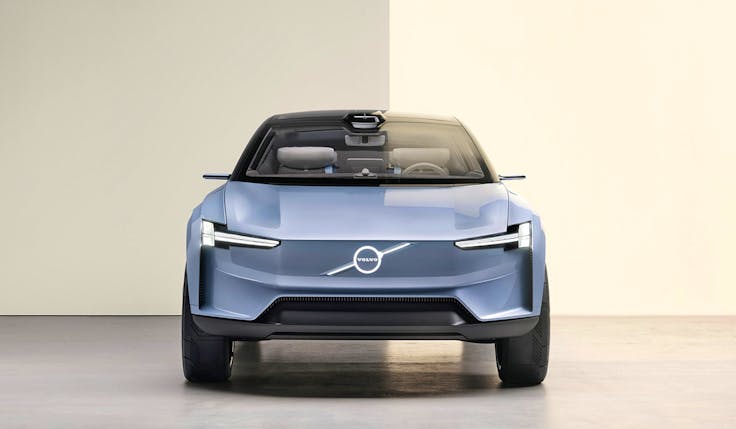Marketers have a responsibility to climate change, and so far we’re failing
With advertised emissions up by more than 10% since 2019 there are three clear steps marketers need to take to help drive down the industry’s impact on the environment.

Climate change is a hard thing to face. You know it’s important. You worry about it. But what to do? You set off on what you think is a greener route, and there turns out to be some caveat. You end up putting it off for another day.
Take electric cars (EVs). They’re greener, right? Well yes, when they’re running, but it’s carbon intensive to build them. In fact, research by Polestar found it takes 50,000 miles of travel for an EV to beat petrol cars on carbon footprint.
Even Christmas trees are complicated. A plastic tree saves a real one being cut down and can be reused. But then farmed Christmas trees absorb CO2, and they’re planted each year to meet demand, while plastic ones are mass produced in a factory and transported to shops on lorries.
It’s hard not to feel discouraged.
But for marketers, there are some unambiguous things to do. The way we go about our work matters.
Marketers are in pole position to shape consumer demand for sustainability
Advertising has an important role to play
It’s because advertising influences a large amount of purchasing, and in turn a lot of production and a lot of emissions. Last year Magic Numbers and Purpose Disruptors introduced a new metric to measure this effect ‘advertised emissions’.
It’s a measure of the power marketers have over climate change, but also a measure of something we need to reduce over time. To do our bit for maintaining a liveable planet, advertised emissions need to be cut in half by 2030.
The new research that’s being aired at COP tracks progress since 2019 and unfortunately, it’s not good news. Despite a dip during Covid, advertised emissions are up by more than 10% since 2019.
 There are 3 ways we can help to turn the tide.
There are 3 ways we can help to turn the tide.
1. Influence people to buy cleaner versions of products
Changes in consumer behaviour are mission critical. Switching to green energy providers, consuming less meat and opting for cleaner modes of transport needs to be widespread. These and other swaps have to contribute a full third of the emissions reduction needed by 2030.
But habit change doesn’t come easy, and green alternatives can be more expensive. That means there’s a selling job to do. A marketing job to do.
Quorn’s ‘Helping The Planet One Bite at a Time’ is a good example of what a successful, environment-oriented campaign looks like. Its message was simple: switch out meat for Quorn – you’ll hardly tell the difference and you’ll be helping the planet. When Quorn changed its focus from the usual vegetarian audience to meat eaters they saved 3.8 million kilograms of emissions.
Another example is Ovo’s ‘What we can do’ campaign, which introduced a carbon-neutral energy plan. The ad stresses the seriousness of climate change while providing consumers with a tool that allows them to do their bit in a matter of clicks.
2. Influence people to recycle, use and re-use things
Prolonging the lifespan of products might seem an odd job for a marketer as we don’t usually want to undermine future demand. But it’s the right thing for minimising emissions and it plays well in consumers’ minds too.
Ikea’s ‘Buyback and Resell’ campaign, allows consumers to re-sell their furniture back to the retailer. Customers don’t want to throw old furniture away but it’s a hassle to find a buyer. With this scheme, the customer gets paid in store credit, so the furniture gets reused and Ikea is the guaranteed destination for the next furniture shopping trip.
For marketers the right thing to do now is less complicated than it was, and easier to face.
Toast Ale is another good example. It sells beer that’s been brewed with waste from bread production. Its slogan is ‘A beer with more taste, a world without waste’.
Lastly, Ariel’s ‘Turn to 30’ commercial highlights the environmental benefits of its ‘Cool Clean Technology’ detergent, which allows clothes to be washed at 30 degrees. The result was an estimated reduction of emissions by an impressive 58,000 tonnes of CO2e.
Virgin Media O2, British Gas and Sky demand world leaders tackle climate misinformation
3. Steer clear of products that can’t exist in the future we need
In August this year, France became the first country to impose an outright ban on advertising fossil fuels. At COP27 the conversation is about whether the UK industry can advocate for a similar ban here.
This may happen down the track, and limits may also be placed on advertising in other dirty sectors. Advertising for automotive, home energy, red meat and foreign travel are all responsible for a lot of emissions.
Steering clear of applying our collective talents to these dirty sectors is a win-win-win.
For marketers, it means sculpting our careers to include the right kind of expertise and not accruing knowledge of sectors that can’t continue to exist the way they currently are.
For clients, the benefit is demand for green versions of their products. Even if the need for this isn’t always expressed in our typical sphere, it is expressed at board level. Carbon intensive production is getting more expensive, and clients need customers that want cleaner products.
The third win is the obvious one. It’s for children and future generations, and it’s for a hospitable habitat for the human species in future and in general.
A virtuous circle for 2023 and beyond
For marketers the right thing to do now is less complicated than it was, and easier to face. The work on what the important steps are has been done.
And a virtuous circle is possible. One where advertising prompts people to pay a bit more for branded, valuable and clean products that respect green standards. One where our industry’s role is to help clean businesses out-compete cheap, unbranded, unvetted and dirty alternatives.
It won’t help to leave these steps for another day, or another year. Every delay makes the task ahead harder.
As Abraham Lincoln said: “You can’t escape the responsibility of tomorrow by evading it today”. And it’s never been more apt.








Comments